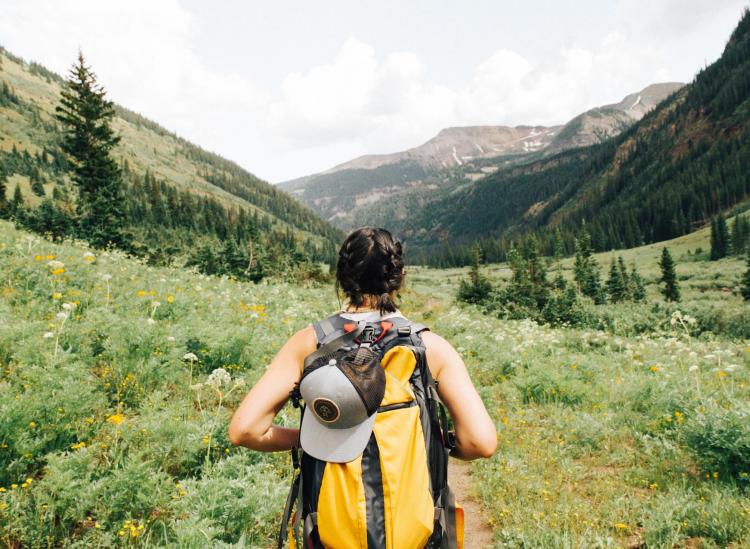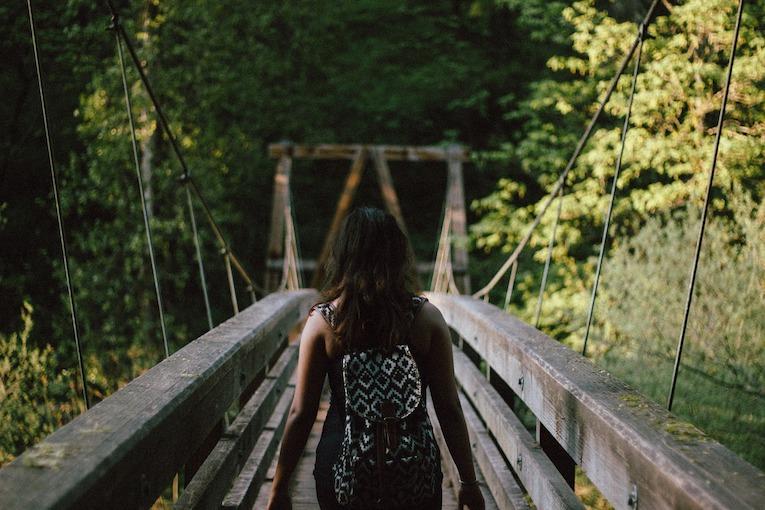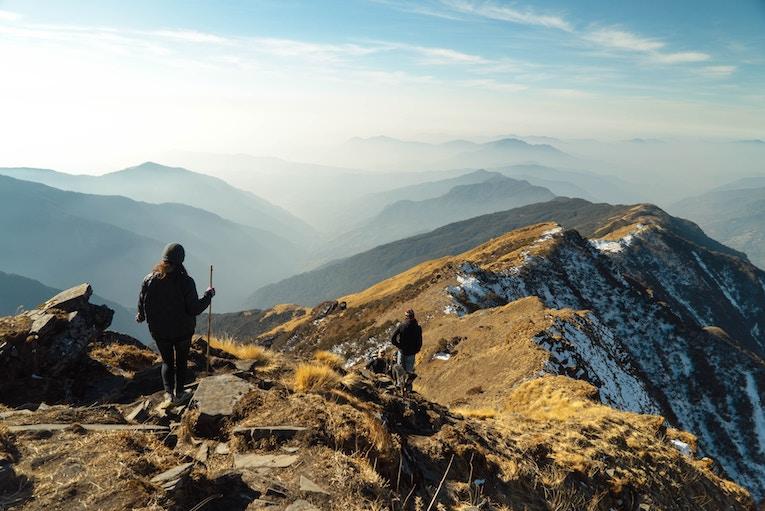What To Pack In Your Backpack For A Day Hike

Unsplash/Holly Mondarich
We love a good hike. There’s nothing like a long walk in the great outdoors to get you feeling refreshed and alive. But if you’re doing more than a garden stroll, you might need some hiking gear to hit the trails. Besides your hiking boots, there are some basics you might want to throw in your backpack. While true backcountry multi-day trekking requires a lot more equipment, here’s a packing list for all of your day hiking needs.
If you’re going on a low-key day hike…

Pixabay
Map. No, your cell phone doesn’t cut it. We don’t care how reliant you are on Google Maps in the city — out in nature, you need a real map. Your phone might not get service on the hiking trail, and who wants to be staring at a screen while hiking anyway? Not us. Get a paper map.
Water bottle. The most important thing you need on a hike is water. Your body needs water to conquer those hills along the trail. Pro tip: Always bring way more water than you think you’ll need, and don’t drink the last of it until you’ve reached a new water source.
Energy bar or trail mix. You should eat a big breakfast before hitting the trails. But even if you’re bringing an entire picnic with you for the end of your hike, make sure you have a protein-heavy snack in case you run low on energy and need a boost to get you all the way to the summit.
RELATED: The Ultimate Ranking Of ‘Healthy’ Energy Bars (From Best To Worst)
Sunscreen. We all know you can burn on a cloudy day, so don’t leave the sunscreen at home. Everyone can use a little sun protection, and if you’re really prone to burns, consider a hat in addition to sunscreen.
Toilet paper. We know you might not like to think about doing your business in the woods, but sometimes you gotta do what you gotta do. And even if you find an outhouse or porta-potty near the hiking trail, those aren’t always stocked with TP. So it’s good to bring some of your own. Bonus points if you bring a biodegradable roll!
Phone charger. You shouldn’t spend much time on your phone when you’re hiking; however, you do want to make sure that thing’s charged in case of an emergency. And if you’re taking a lot of photos or listening to music as you explore, you might run down your battery more quickly than you realize. You could even bring a portable charger so you can get some extra juice without an outlet.
Lip balm. Sometimes the wind picks up and your lips get chapped. So toss a spare chapstick into your bag to avoid having to finish a hike with raw and irritated lips (not fun, trust us).
Band-Aids. Your hiking shoes might be made to fit your feet perfectly, but they can still cause some blisters — especially if they’re new and still being broken in. But there are also little slips and falls that could cause scrapes and cuts that need a bandage while hiking.
Insect repellent. Avoid bug bites or — the hiking horror — ticks by bringing along some bug spray. But we’d suggest staying away from the heavy-duty stuff that’s pretty terrible for the environment and sticking with a lighter repellent.
If you’re braving some rough terrain or weather…

Unsplash/Galen Crout
Rain jacket. There’s no need to be vulnerable to weather while hiking. But an umbrella won’t cut it for trekking purposes, so we’d suggest investing in a lightweight rain jacket. It can easily be scrunched into a backpack and pulled out at the first sign of raindrops.
First aid kit. You can buy a pre-made first aid kit from gear outfitters like REI or Patagonia or make your own, but the important thing is to have one when you’re tackling long hikes over difficult terrain.
Trekking poles. Want a little extra balance on your side? Bring poles on your hike. Collapsible hiking poles will be best for hikes with different types of trail, so you can put them in a pack when they’re no longer useful.
Knife or multi-tool. There are some situations that you just can’t predict. Maybe your lovely rain jacket gets caught on a tree and needs to be cut free, maybe you get a splinter, maybe you need to cut a bandage out of an extra shirt. But to improvise solutions to any of these problems, you’ll need a Swiss Army type of knife or multi-tool.
Flashlight. If there’s any chance of being out after dark, you’ll want a flashlight on hand. Your phone’s light might be okay on shorter hikes closer to civilization (as long as you have a portable charger on hand to help out the battery), but for longer treks further into the wild, bring a real one.
Whenever you’re heading out on a hike, remember to dress in layers. The beginning of the trail is rarely a good example of how you’ll feel an hour in. Always prepare to be both warmer and colder than you think you’ll be, especially if your hiking route includes extreme elevation changes.
RELATED
This App Can Help You Identify The Mysterious Plants And Animals You Spot While Hiking
10 Long Distance Hikes With No Camping Involved











